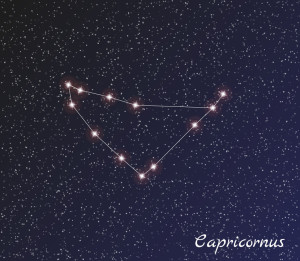

Summer is winding down, but it’s still not too chilly to spend an evening camping under the stars. September is the perfect month to spend your nights outside stargazing. But do you know what to look for? We’ve compiled a list of the best planets, constellations, and other bright mysteries to look for in those beautiful September skies.
Videos by Outdoors
Venus – By late August, Venus returns to view as the “morning star.”
Jupiter – Our solar system’s largest planet and the second brightest point of light in the evening sky, returns to view in the dawn sky mid-September, spending the entire year within the borders of Leo, the lion.

Mars – This planet is visible in the morning sky and is climbing higher into the sky and gradually growing brighter as the year progresses.
Saturn – Golden Saturn will disappear behind the Sun in November, so you better look while you can. It will return to view in the morning sky by end of the year.
Mercury – The solar system’s smallest planet is visible in the evening during September.
Neptune – The fourth-largest planet in the solar system requires a telescope to find it because it’s so far away. Neptune’s best appearance of the year is in early September.
Constellations:
Pegasus – While the mythical, winged horse Pegasus is one of the largest constellations in its area, it boasts no bright stars. Four, second magnitude stars mark the body of the horse, the Great Square of Pegasus. Look to the east to northeast just above the horizon to see this constellation.

Capricornus – This sea-goat is best seen at early evening in September and October. No matter your location worldwide, Capricornus is highest in the sky in early September.
Delphinus – Delphinus the dolphin is visible in late summer from the Northern Hemisphere and resembles a dolphin leaping out of the water.
Cygnus – This constellation can be seen in the northern hemisphere between June and October. The swan is one of two birds along with Aquila the Eagle that are said to have been hunted by Hercules.
Noteworthy Sky-watching Events:

Last Quarter Moon – On September 4th the last quarter moon will pass in front of Aldebaran, one of the brightest stars in the sky and the angry orange eye of Taurus the Bull. If you live in eastern North America you’ll have great visibility of this occultation. But no worries, there will be another chance over a wider portion of the North America early on November 26.
Another Lunar Eclipse – For those eclipse watchers living in central and eastern North America (roughly east of a line from Winnipeg, Manitoba, to Houston) you can watch the whole lunar eclipse from beginning to end. Those farther west will see the moon rise with the eclipse having already begun. The moon will undergo a full eclipse and very nearly coincide with perigee, it’s closest point to Earth.
Darkest Places to See the Most
The International Dark-Sky Association is an organization seeking to recognize and promote stewardship of the night sky. Their efforts and the agencies they support, seek to keep night skies free of light pollution for the study and appreciation of the universe beyond Planet Earth. Their International Dark Sky Places program certifies places worldwide comprising more than 16,000 square miles. In the U.S. XX Parks achieve IDSP recognition:
- Big Bend National Park, Texas
- Blue Ridge Observatory and Start Park, North Carolina
- Capitol Reef National Park, Utah
- Chaco Culture National Historical Park, New Mexico
- Cherry Springs State Park, Pennsylvania
- Clayton Lake State Park, New Mexico
- Copper Breaks State Park, Texas
- Death Valley National Park, California
- Enchanted Rock State Natural rea, Texas
- Goldendale Observatory Park, Washington
- Grand Canyon-Parashant National Monument, Arizona
- Natural Bridges National Monument, Utah
- Oracle State Park, Arizona
- Pickett CCC Memorial State Park & Pogue Creek Canyon State Natural Area, Tennessee
- Staunton River State Park, Virginia
- The Headlands, Michigan
- Weber County North Fork Park, Utah

Tips for Stargazers
- Download an App: There are plenty of stargazing apps that can instantly show you the night sky from your location and many show the location of planets and constellations.
- Find a Dark Sky Location: We’ve found that state and national parks are among some of our favorite places to stargaze.
- Purchase a Red Light: It takes between 40-60 min
utes for your eyes to become fully adapted to the dark, but you’ll need a little light to read charts or tend to equipment. The human eye is least sensitive to red light. This will help you get dark adapted, as it’s critical to preserve your night vision once you are adapted.
- Observe Patterns Among the Stars: This is a great way to start learning constellations. Many stargazers will find a noticeable pattern and continue finding patterns while building outward to notice new ones.
- Get the Right Equipment: Maybe not right away, but eventually you may decide to purchase binoculars or even a telescope to see a little bit more clearly what’s up in that big mysterious sky. Make sure to take your time and test equipment to make sure you’ve found the perfect gear for you.









